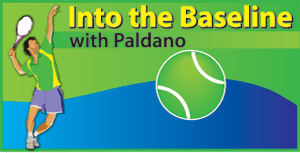Looming ‘catch 22’ of Tennis Player development
View(s):The International Tennis Federation [IFT] events are for juniors under the age of 18 and it has the reputation of being the show case of early player development in a country. The players of both genders coming through this phase have not shown the potenial to reach the top 100 of the world rankings to the extent expected. This leaves a question mark as to whether the ITF events are the best road to successful Tennis. Observation of the ITF events in the last three weeks in Colombo when compared with the requirements of ‘open Tennis’ success its purpose is questionable.
 Most of the countries involved in player development projects have been experiencing the ‘no win’ situation even after immense efforts. Success in Tennis has become very difficult to achieve. As the challenge is big many players fall on the way side.
Most of the countries involved in player development projects have been experiencing the ‘no win’ situation even after immense efforts. Success in Tennis has become very difficult to achieve. As the challenge is big many players fall on the way side.
On record, the number of top one hundred players of ITF junior rankings reaching the top hundred of the open-ranking has not been good. In fact, it is extremely bad. To get to the top 100 of the ITF rankings players will have to play group 1 or group 2 events. Such events do not even come to our soil. Only group 4 and 5 events are allocated to us. ITF’s use of countries like ours is to stage the qualifying events for their group I & 2. In their view, groups 4 and 5 are meant for junior players below the age of 15.
Hidden Costs
Player development is what propels the sports economy of the world. This is the base on which sports goods manufacturers and retailers live on. Sponsorship of world’s best players is the bait to sell their equipment. The cost of playing Tennis is staggering due to this and keeps the best talents away from the game. The variety of equipments used by players now in my opinion, are not really necessary at the early stages. The next costly item that Tennis demands is travel. There is also in fact a segment known as ‘sports tourism’. Benefactors are hotels and airlines. In any of the ITF events in Sri Lanka, the sponsorship mostly goes to accommodation costs than the direct event cost.
The cost list mounts on and most of it will be not known on entry but pops up surprising even the most seasoned campaigners. Surviving the cost is more difficult than overcoming the challenge on the Tennis court and this prevents the best talent to come to the top.
Surfacing of potential
It is a confirmed fact that until about the age of 21 the physical development in children vary according to the geographic location in which they live. Using this phase of growth as talent ID gives a big advantage to those living in the colder regions and a disadvantage to the warmer regions. Genealogical advantages also are profound in the early stages of life.
The few Tennis successes from tropical Asia have been registered only the mid twenties. It may be best age to judge talent in our regions. This places extra challenge in us and an enormous financial burden to sustain efforts for over very long periods. Considering we come into a sport around ten years of age, it has to sustain fifteen long years. It is also the prime period of schooling. It is too much of a risk to miss out on education. The ‘catch 22’ looms in every stage of Tennis and there seems no end to it.
ITF in Colombo
As I see, the purposes of staging ITF events in Colombo are many folds. These are our only link to the international Tennis world and its standards. Although they are not open enough they are certainly better than the local events which can only show a player to be good in our own neighborhood. In the kingdom of the blind man with one eye, is king. Let us be aware of this all the time and also those groups 4 and 5 of ITF events are somewhat of a local situation.
Escape the trap
‘In my little room’ is a famous song – not a very good road for junior Tennis development. What do we do then? The best is to focus on salient aspects of the game of Tennis than to focus to beat our neighbor in our town.
Develop a game and its requirements in technique to suit the body at the same time. Not technique first. Next, make sure the playing ability covers the possibility to play from all three positions of the court. That is behind the base line, in court, like Federer and Serena and at net once again like Federer or his coach Stephan Edberg. Recently, I have seen players unable to play a basic volley after training for ten long years very intensely, in Colombo. The last one is to understand what tactics in Tennis means. Juniors exhibit near zero levels in this aspect. It is the longest chapter of development in the game of Tennis. So please start very early or you will be too late to catch that bus!
In the light of the ‘Catch 22’ hanging over the head with a very thin silk thread, being smart is the only way to beat the threat of it.
George Paldano, former player; Accredited Coach of Germany; National, Davis-Cup, Federation Cup and Qualified coach–. gptennis.ceylon@gmail.com


